The scope performed well optically but suffered from expansion/contraction as the ambient temperature changed.
I had to refocus every few images. The 6" carbon fibre tube hardly ever shifted in focus - even from one day to the next.
I decided to replace the thin plastic tube with a carbon fibre tube from Klaus Helmerichs.
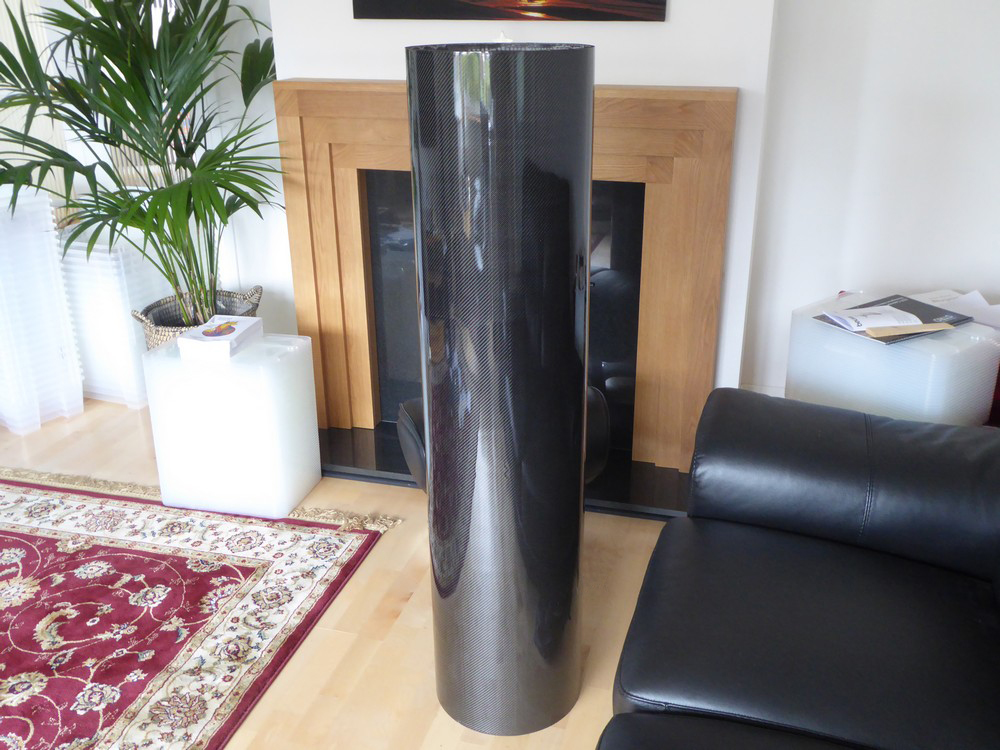
I asked for a diameter of 316mm to fit my existing tube rings and it was made very accurately to 316mm.
That meant that focuser hole, mirror cell and secondary spider holes could be spaced exactly the same,
removing the hard work of calculating where they should be drilled.
Find and make a reference line down the tube with a laser level to line up focuser, spider holes and mirror cell holes.
Focuser hole cut - hard work. The tube is double walled foam sandwich and the carbon fibre was tough to get through.
Spider holes marked...
Checking the spider vanes - must be at 90 degrees to each other.
New end caps made
The inside of the tube was flocked to cut out stray light.
The technique used was not to employ the adhesive flocking as normal - it sticks hard to the first surface
it touches and is almost impossible to apply without wrinkles.
I leave the plastic backing on - which increases rigidity, and glue it to the tube with gorilla glue.
If mistakes are made there are a few minutes available to lift and replace.
Loop around the tube and leave an overlap unglued - a single craft knife cut can be made in both overlaps
and a perfect join can be made.
Steel rule wedged in place to allow a straight cut:
Flocking completed
Cutting a long story short - the primary and secondary mirrors were fitted,
and a new method of adjustment and collimation was used.
See here for details (not yet - not written yet).
The scope was put back in the dome on the mount. A bit difficult because
ideally it needs two people, but Covid is still with us.
First Light August 10th
Image of Vega 1 second exposure
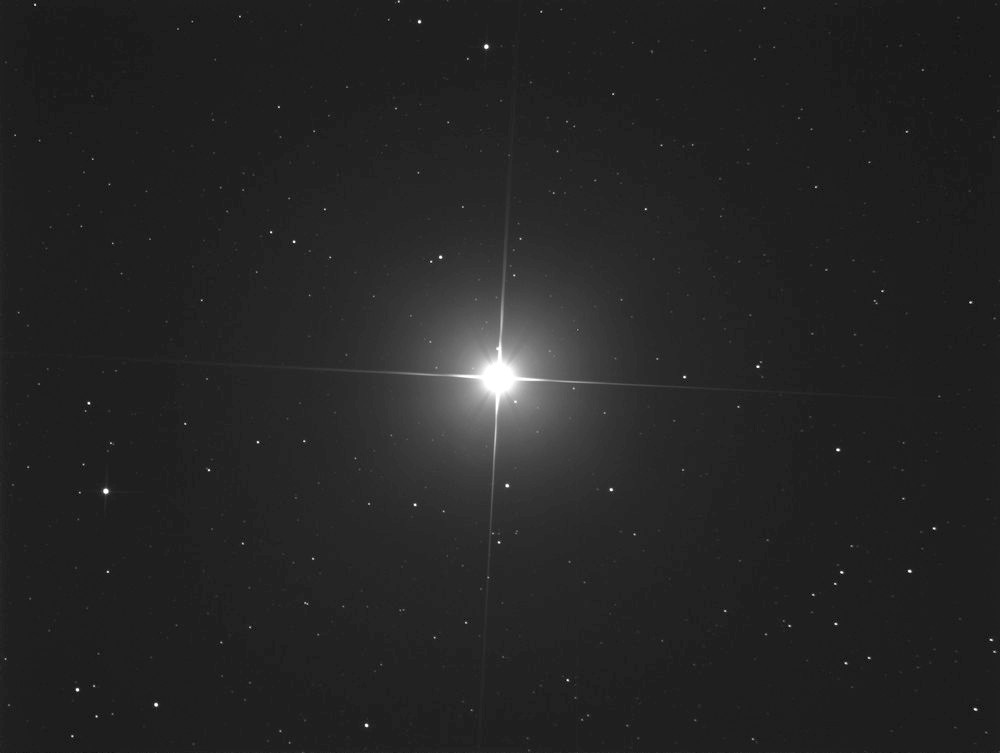
Image quality good, stars in lower right corner not quite round. Diffraction spikes tilted 3.2 degrees.
August 12th
Camera rotated clockwise
Spikes now 2.4 degrees off. At least I know clockwise is the correct change to make.
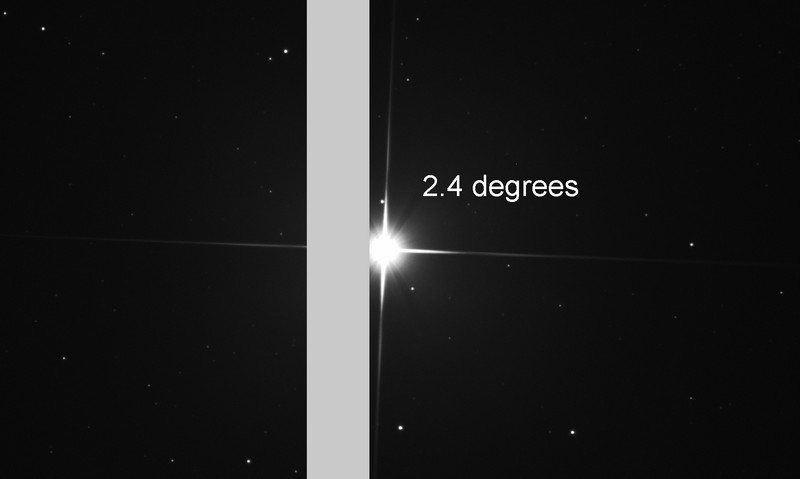
August 22nd
Camera rotated a bit. Now 1.3 degrees off.
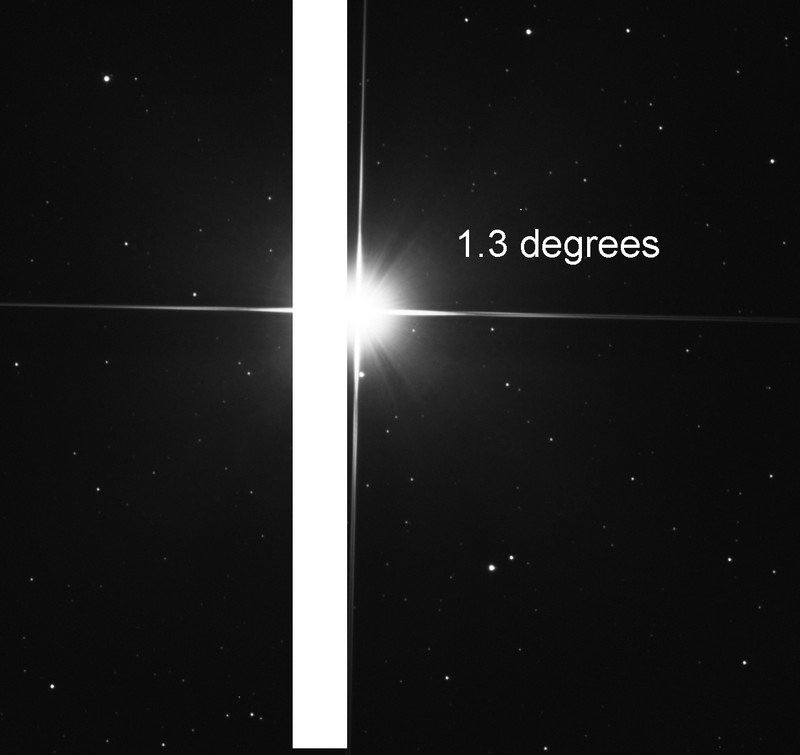
Plate solving images shows that fortuitously I am heading in the right direction for scope rotation in the tube rings.
I am 1.72 degrees from North being vertical.
When diffraction spikes are perfect it will only take a small adjustment in scope rotation.
The problem is, it is very difficult to rotate the scope in its rings a small amount.
Loosen the rings and the scope can easily shift too much.

August 24th
An unexpected clear sky gave an opportunity to see if the camera alignment is better:
It looks good!
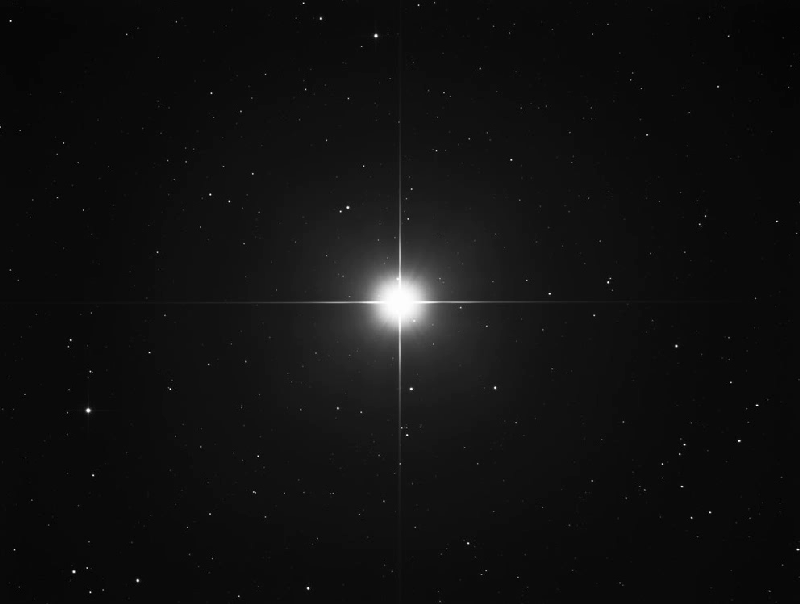
Platesolving the 16 images of Vega gave an average image rotation from true North of 180.52075
So, a shift of 0.52 degrees is required. Not easily done!
It is encouraging that the scope is giving good round star images:

August 28th
There have been a few clear nights to gather data, and it looks like the carbon fibre tube is far less prone to focus shift with temperature:
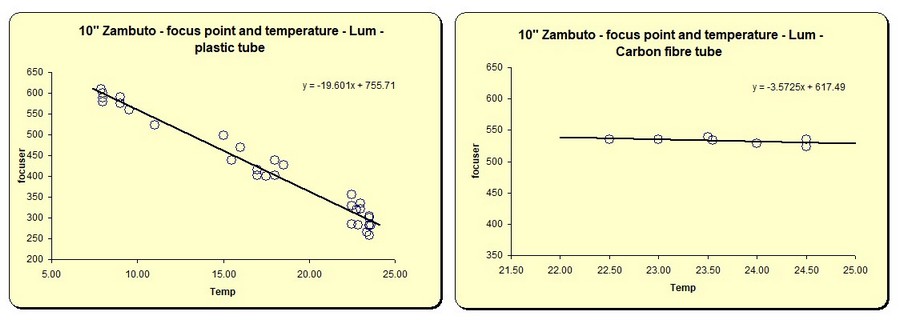
September 6th
Small changes made to tube position in its tube rings. Images are now well aligned North-South.
This image had North downwards (180degrees) so a mere 0.07 degrees from perfect.
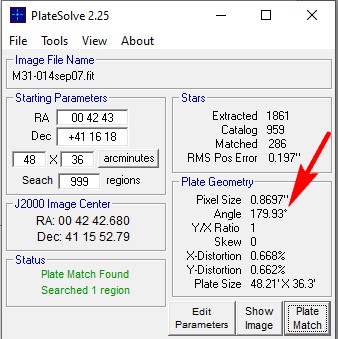
September 7th
More data gathered - the shift in focus position with change in temperature revealed an
interesting fact - the carbon fibre tube appears to have a negative coefficient of thermal expansion.
As the temperature rises - the tube shrinks,
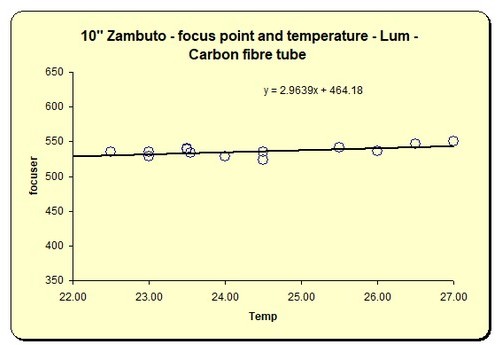
I checked carbon fibre - expansion is positive along the fibres and negative across.
Depending on the weave pattern carbon fibre can be made almost independent of temperature.